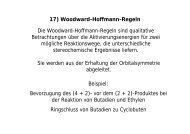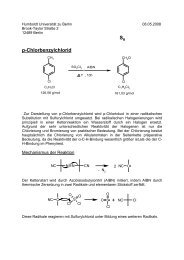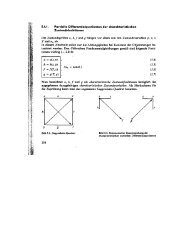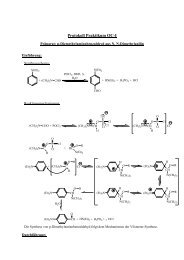Gas-Phase Reactions of Homo- and ... - Institut für Chemie
Gas-Phase Reactions of Homo- and ... - Institut für Chemie
Gas-Phase Reactions of Homo- and ... - Institut für Chemie
Create successful ePaper yourself
Turn your PDF publications into a flip-book with our unique Google optimized e-Paper software.
Helvetica Chimica Acta ± Vol. 88 (2005) 1407<br />
(structures 2 <strong>and</strong> 4 in comparison to 3) ± resulting in more favorable exocyclic transition<br />
structures ± can be considered as an advantage, this path may be inhibited due to an<br />
energetically dem<strong>and</strong>ing distortion <strong>of</strong> the linear arrangement R CN M ‡ . Actually,<br />
while the exocyclic transition structures <strong>of</strong> nonanenitrile/Fe ‡ <strong>and</strong> nonanenitrile/Co ‡ are<br />
generally more favored by ca. 40 kJ mol 1 in comparison to endocyclic transition<br />
structures, the distortion from the 1808 end-on conformation in M N C requires ca.<br />
30 kJ to 60 kJ mol 1 depending on the degree <strong>of</strong> bending [7a]. Obviously, for smaller<br />
systems there may well exist a balanced situation due to the operation <strong>of</strong> opposing<br />
effects.<br />
Scheme 1. Mechanisms <strong>of</strong> Dehydrogenation (1 ! 2 ! 5 ! 9, <strong>and</strong> 1 ! 3 ! 6 ! 9, resp.) <strong>and</strong> for the Elimination<br />
<strong>of</strong> Ethene (1 ! 3 ! 7 ! 10, <strong>and</strong> 1 ! 4 ! 8 ! 10, resp.) According to the Concept <strong>of</strong> Remote Functionalization<br />
In terms <strong>of</strong> overall product formation, the reactions <strong>of</strong> Fe ‡ ,Co ‡ , <strong>and</strong> Ni ‡ with<br />
pentanenitrile are similar, although the branching ratios differ (Table 1). For Fe ‡ <strong>and</strong><br />
Co ‡ , dehydrogenation represents the main product channel, whereas elimination <strong>of</strong><br />
propene is clearly preferred for Ni ‡ .<br />
As to the detailed mechanisms <strong>of</strong> C H/C C-bond activation on n-C 4H 9CN, the<br />
results obtained with the isotopomers 11a ± 11d (Fig. 1) were quite revealing in that<br />
they are not compatible whith the simplified, traditional mechanism depicted in<br />
Scheme 1 [5b,c]. Surprisingly, the labeling studies indicated that the expulsion <strong>of</strong> ethene<br />
originates only for Ni ‡ ± <strong>and</strong> not for Fe ‡ <strong>and</strong> Co ‡ ± exclusively from the g <strong>and</strong> d<br />
positions <strong>of</strong> the alkyl chain as required for the concept <strong>of</strong> remote functionalization. In



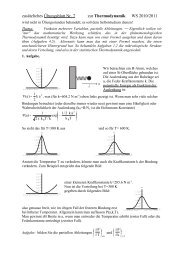
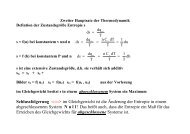
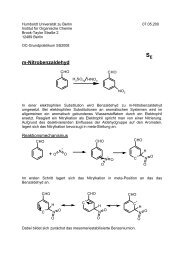
![Photoswitchable ionophores based on 1,3-alternate calix[4]arenes ...](https://img.yumpu.com/12290271/1/190x253/photoswitchable-ionophores-based-on-13-alternate-calix4arenes-.jpg?quality=85)
